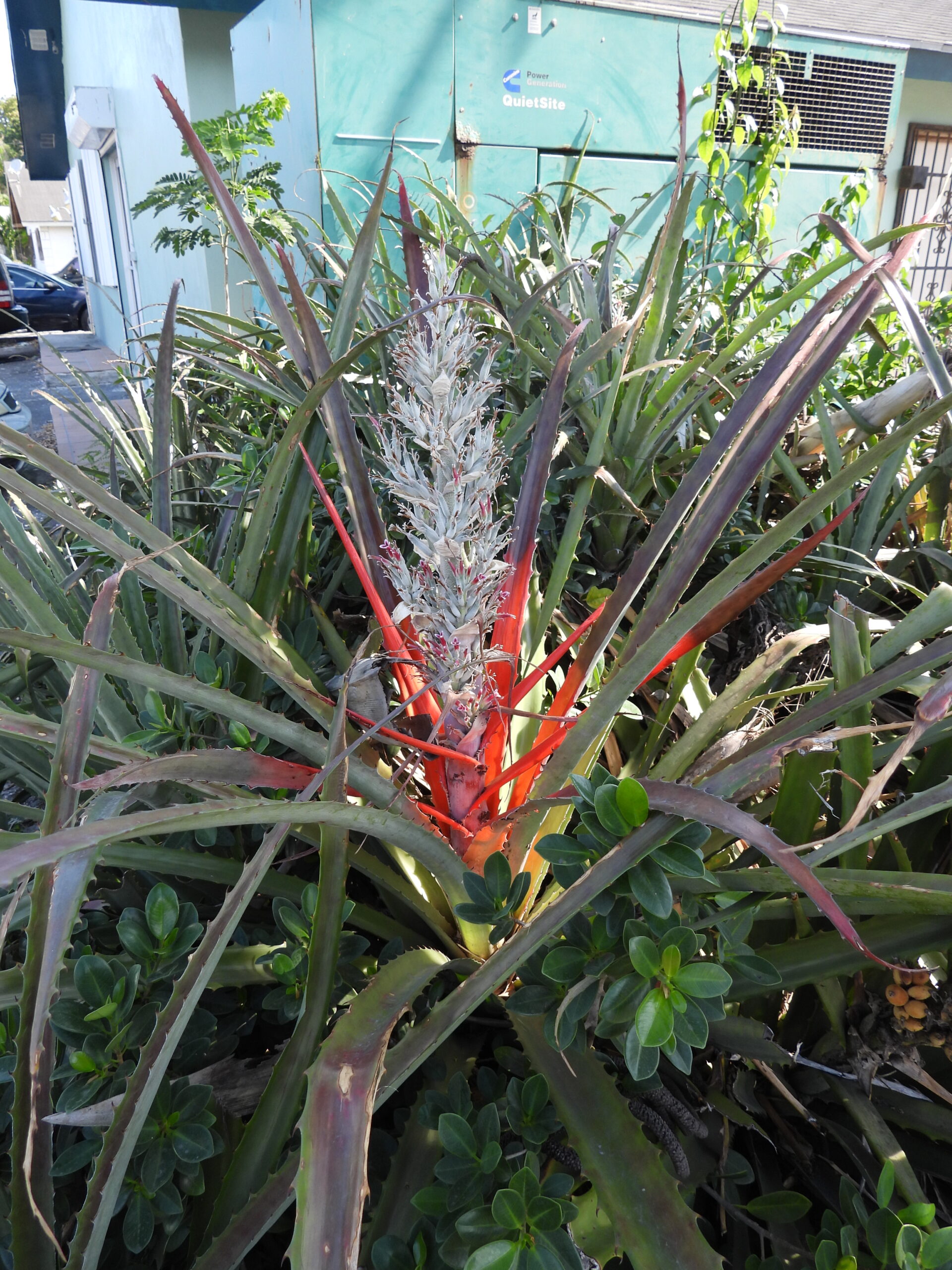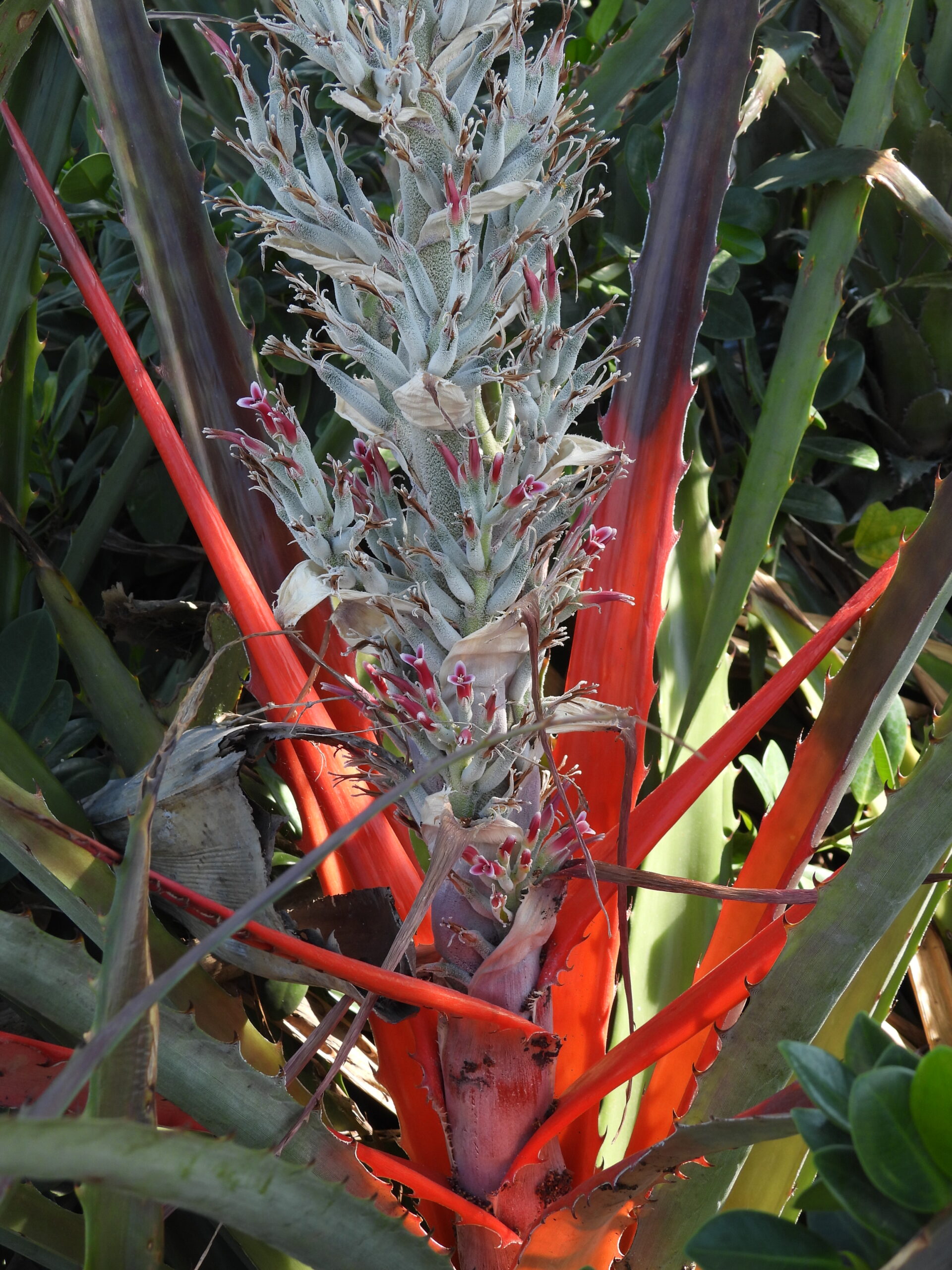Habit: Bromelia pinguin grows without discernible stems up to 1 m (excluding inflorescence) in height. The leaves dark green adaxially and whitish abaxially, organized in a rosette forming a series of cups at their base that can hold water and detritus. The leaves are parallel veined, lanceolate, deeply serrated margin, with recurved spines up to 1 cm long, and to 6 cm wide at the base and up to 2 m in length with a spined leaf apex.
The complete, perfect, slightly zygomorphic flowers, each with a subtending bract, are arranged in a white, tomentose, spikelike panicle. The lower bracts below the inflorescence are bright red colored. The flowers have 3 white tomentose fused sepals in the calyx that exceed the length of the bracts. There are 3 red with white margins, fused at the base petals in the corolla that are longer than the calyx. There are 6 stamens that are equal in length and adnate to the petals. The ovary is inferior with 3 locules and numerous seeds. The fruit is a yellow berry at maturity.
Habitat: Bromelia pinguin grows in Human Altered environments (yards and gardens) in the Bahamas. In its native range it is in low elevation Dry Forests.
Distribution: Bromelia pinguin is known to occur throughout the Bahamas. It is native to Mexico, Central and northern South America as well as parts of the southern Caribbean.
Medicinal/Cultural/Economic usage: Bromelia pinguin is not known to be used medicinally in the Bahamas.
Bromelia pinguin is used in the horticultural industry and has been used to make living fences.
The fruits are edible and the leaves are a known source of usable fibers.

